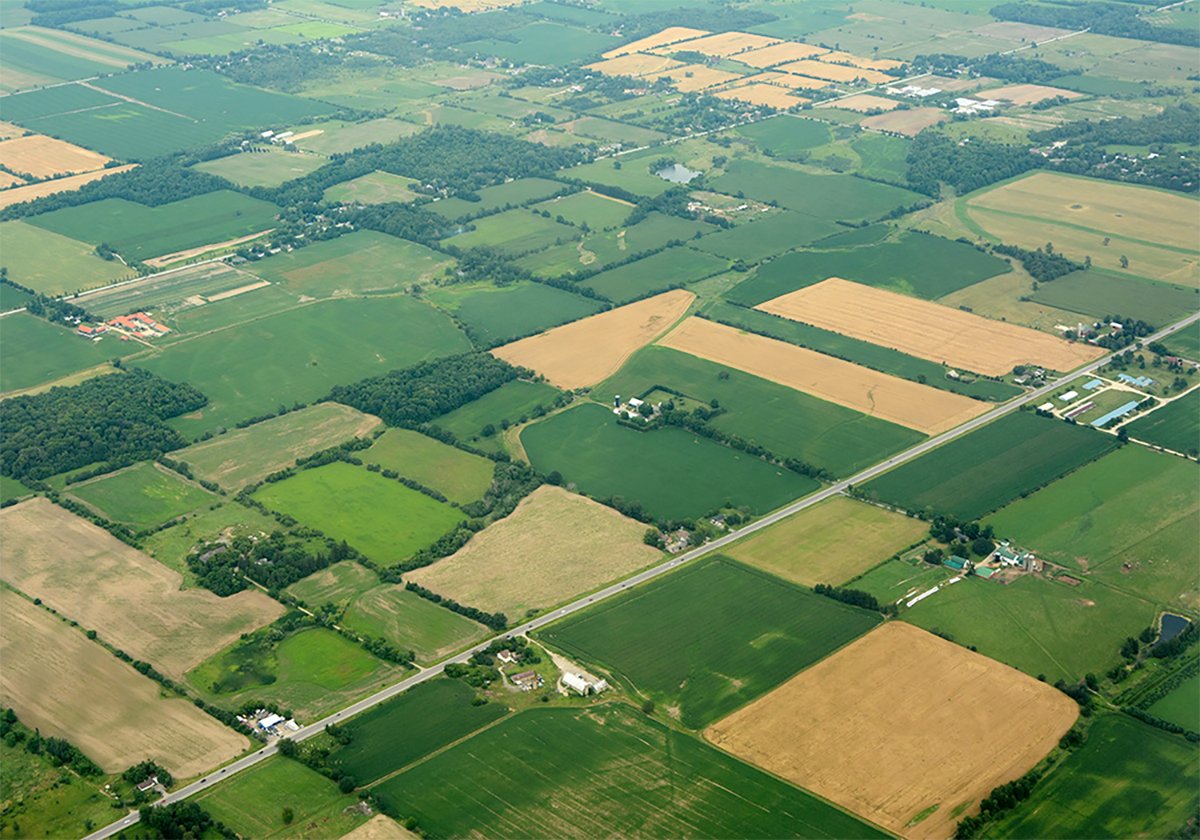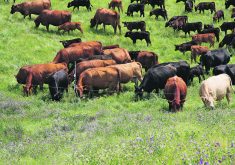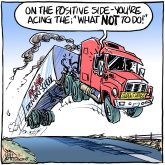Thing of past
Although the common belief is that capitalism is the tool that developed North America, there is a need to take a closer look.
It was actually a three-way combination of the government sector, the co-operative sector and the corporate sector.
Whenever there was a need for a major undertaking, it was necessary for the federal and/or the provincial governments to get involved, put up the capital and often management, while in most instances, the corporate sector profited. The railroad, the natural gas system and the telephone system all ended up putting bundles of money into the pockets of a chosen few at the expense of the people.
Read Also

Higher farmland taxes for investors could solve two problems
The highest education and health care land tax would be for landlords, including investment companies, with no family ties to the land.
I am not opposed to real free enterprise but truth is truth.
The agricultural community and agricultural production was hampered more by capitalism than aided by it.
The farmers realized that there would be no agriculture if the corporate community was able to remain in dictatorial control of both the supply of the goods, seed and equipment to produce their products and the marketing of their produce.
In order to counter that control, the agricultural community in both Canada and the United States turned to the co-operative ideals of working together, ownership and control in the hands of the farmers, the people who used and depended on their own industry.
The agricultural community developed co-operatives to supply their needs and to market their goods. All benefits were returned directly to the people who used the services of these co-ops.
The corporate world began a war against the co-operative sector in the mid- to late-19th century and has continued that battle until now.
Now they have won. By the disappearance of the family farm and the emergence of corporate farms, the marketing of the produce has also changed. …
The president of Archer Daniels Midland is now crowing, with the merger of Agricore and UGG,… thereby creating one non co-operative company that will control over 40 percent of the marketing of (Western) Canada’s grain production, that they have successfully destroyed the co-operative movement in Western Canada.
If the farmers of the West approve the merger, they will not only destroy the future of their children; they will shoot their grandfathers in the heart in the process. The institutions, values and principles that developed and held the family farm together will definitely be a thing of the past and legislation will be the only alternative.
– Raymond Hurst,
Calgary, Alta.
Grow organic
I am writing in response to a letter published in Open Forum from the Humboldt and District Marketing Club in the July 5, edition of The Western Producer, signed by Werner Yungmann.
The Humboldt and District Marketing Club might have a good social program but as a marketing club it doesn’t have much credibility, if any.
In the world of commerce there is a rule that has been around forever. The rule says, “if you want to be successful in business, you must produce what the customer wants to buy.”
It is obvious most offshore buyers do not want genetically modified canola or any other GM grain or oilseed at this time.
Rather than taking a class action suit against Percy Schmeiser, they should be giving him an award for pointing out the fallacy of growing GM crops.
If the Humboldt Marketing Club was serious about making money, which the name implies, they would be seriously looking at growing certified organic canola. Regular canola prices at Davidson on July 3 were $7.48 a bushel. I checked with some buyers of certified organic canola and they were offering $13.50 a bushel.
If the Humboldt Marketing Club switched to growing certified organic canola, they wouldn’t have the extra cost of Roundup Ready herbicides, fertilizers and the $15 per acre royalty they are paying Monsanto.
Saskatchewan uses one third of the pesticides (herbicides, insecticides and fungicides) in Canada today, and they are polluting our water, air and food. If they switch to certified organic, they would be helping clean up the environment.
Our water, air and food are becoming increasingly more polluted every day. It is obvious that if the Humboldt Marketing Club wishes to help its members economically, they should employ a new economic adviser and perhaps an agronomist.
– Elmer Laird,
Back to the Farm Research Foundation,
Davidson, Sask.
Canola markets
Editor’s note: The following letter is a response to the letter above, which was also published in the Saskatoon StarPhoenix on Aug. 10.
Elmer Laird is incorrect in stating, “It is obvious most offshore buyers do not want GM canola” and that Saskatchewan farmers are not using environmentally friendly farming practices.
Domestic and export use of Canadian canola during the 2000-01 crop year set a record at 8.2 million tonnes. The majority of this canola was exported to Japan, China, Mexico and the United States.
Other countries are not so much resistant to GMOs as protective of their own canola and rapeseed industry. For example, Europe, (which) crushes rapeseed oil and directly competes with Canadian canola oil sales, does accept and manufactures cheese from GM enzymes, crushes soybeans for edible oil usage and they use GM-derived insulin.
Genetically engineered canola has allowed producers to be better stewards of the land and more environmentally friendly. A study conducted by Serecon Consulting and Koch Paul Associates, with guidance from the Canola Council of Canada, randomly surveyed 650 growers in Western Canada on their attitudes, production practices and production costs.
According to canola growers:
- Less tillage and summerfallow from growing GM canola benefits soil conservation.
- Fuel savings due to fewer field operations (less fuel means less exhaust emissions).
- Less use of herbicides due to more effective weed control.
- Slight increase in fertilizer usage in stubble fields.
- Increased yields and dockage reduction.
- Increased grower revenue of $5.80 per acre.
As for Mr. Laird’s price comparison of $7.48 a bushel for conventional and $13.50 a bushel for organic canola, quantity makes all the difference.
In most instances, organic grains and oilseeds are purchased in small amounts, as organic buyers require the actual product.
Would $13.50 a bushel be offered to the producers of 8.2 million tonnes within one crop year? Could 8.2 million tonnes of organic canola be grown with organic methods producing decreased yields and increased dockage?
If producers thought that it would, I’m sure that there would be a sharp increase in Saskatchewan organic producers.
Conventional canola prices are not closely related to canola production. The conventional canola market is a function of the world vegetable oil market.
Canola prices cannot rocket too far upward while the world supply of soy oil is at a record and rising.
We do not oppose organic production, but are opposed to someone who discredits progress in technology, which benefits producers and consumers in agronomic practices, the environment and health care.
– Ray Hilderman,
Saskatchewan Canola Growers Association,
Strasbourg, Sask.
It’s about money
I am writing in response to an article by Ardith Stephanson that appeared in the Aug. 23 edition of The Western Producer: “Mill rate vital to education.”
No farmers would argue that education is not important. However, Stephanson adopts the view that money is no object when it comes to education. This is a fallacy. I have two simple questions for this director of communications of the Saskatchewan School Trustees Association.
How would you like, as a private citizen, to pay over $14,000 of school taxes this year, which is the education levy I must pay for my average size farm?
How would you like to face school taxes that increase seven times as fast as inflation?
The school taxes for one of my quarter sections increased from $589 in 1996 to $1,016 in 2001. This is a 72.5 percent increase compared to an increase of 10.6 percent for the Consumer Price Index (ie. inflation factor) for the same period.
Clearly, my school board, Wakaw School Division, has not shown any sense of financial discipline in the last five years. This year alone, my school taxes increased by 28 percent.
School taxes constitute a grossly unfair tax system for farming, a sector of the economy that depends on properties for business.
Land is used to produce a natural resource: food. The unjust treatment of farmland with regard to school taxation is obvious when compared to another land base producing a natural resource: forests.
I wonder how long it will take Weyerhaeuser Sask Ltd. to close shop if the government of Saskatchewan would perform a formal valuation of all the forests under Weyerhaeuser’s management and apply the education mill rate to such valuation?
The issue is not whether education of our children is important. The issue is how such expenditure of our society should be paid for. I found it insane that school trustees associations are given vast power of taxation related to budgets that are not debated publicly.
Education should be paid by general tax revenues, as education is a provincial service. Saskatchewan has the honour to be the province with the greatest fraction of property taxes going to education. It is time to abandon education taxes on properties, and to have the full amount of education expenditures debated in the legislative assembly.
– Francois Messier,
Saskatoon, Sask.














